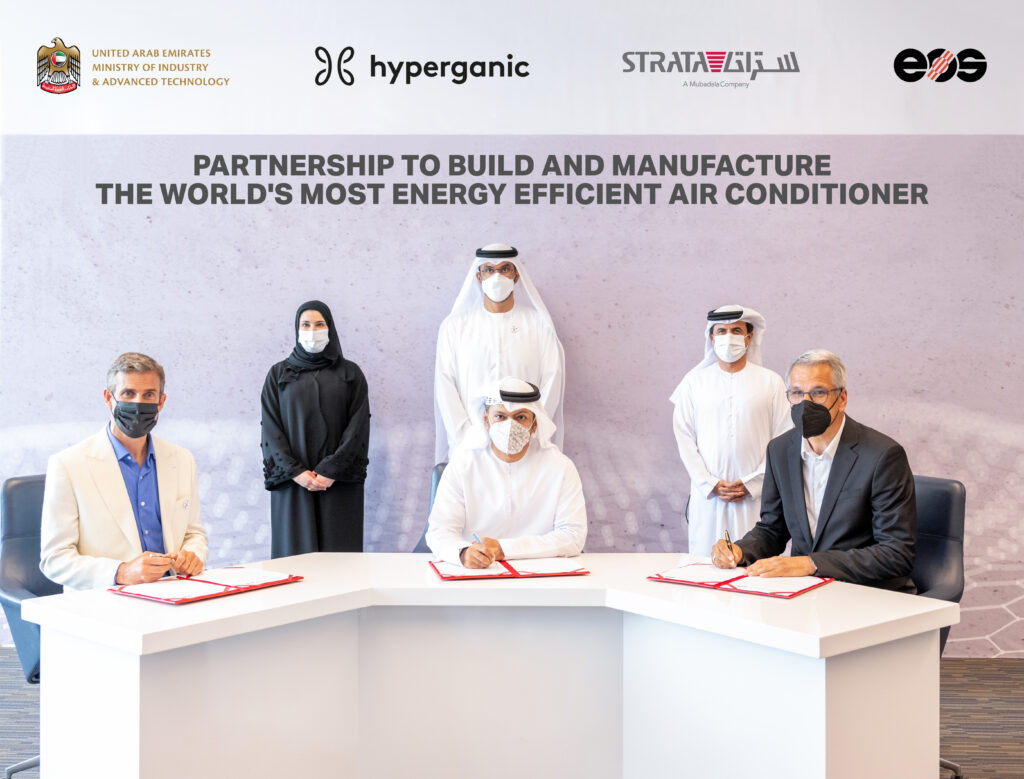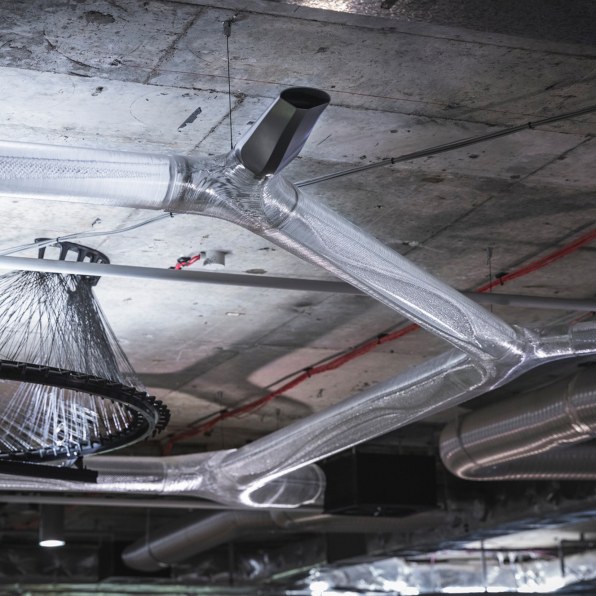On the fourth day of record high temperatures, which are “probably the warmest in 100,000 years,” the conjecture and oil company fog surrounding climate change was breaking. You may not believe that it is raining, but you will get wet. The hotter Earth climate reality is set to disrupt the lives of everyone on the planet. Climate systems, water levels, growing seasons, nature itself are thrown off kilter.
Surely, they know that if we kill the planet we would also kill “the economy,” and worse still, “the stock market.” Much of the world is blissfully unaware, complacent, or caught in a remarkably persistent self delusion about the current climate catastrophe we’re in. You do not have to be, however. For you and yours or your pocketbook, 3D printing can help you mitigate, reduce the effects of, and even profit from climate change. In this article, we look at some scenarios that could help you come out ahead in one of the most challenging crises that humankind has faced.
Heat Pumps and Air Conditioning Systems
Air conditioning is going to be bigger than hair conditioning. With wet bulb temperatures becoming a reality for hundreds of millions of people worldwide, heat indexes are increasing, meaning that there will be many more deaths due to heat . The conditions on the planet are becoming harsher and this will affect us all but will disproportionately disadvantage those in some areas. In 2016, it was estimated that around 365,000 deaths were related to heat, and countries such as India could bear the brunt of more going forward. Air conditioning systems seem like a logical mitigation tool, but these are energy intensive, often uses chlorofluorocarbons, and have long been standardized.
Optimized Air Conditioners
With 3D printing, Hyperganic, EOS, and Strata designed a more efficient air conditioner. They hope that the model is ten times more efficient than existing counterparts. More firms should look at making similar devices. Since around 2012, the University of Maryland has been working on heat exchangers with various partners. We know that we can make such devices in a highly optimized way for space and aviation. What we don’t know is if we can reduce the costs of these essential parts enough to make them viable for widespread industrial and home use. This is a weird example of a huge problem: established working technology and no one taking the time to industrialize it.
Heat pumps are all the rage in Europe. These systems can be improved significantly, for instance by 3D printing improved versions of individual components, as demonstrated by Daikin. Incidentally, Daikin’s chemicals division also developed a fluoropolymer for powder bed fusion. Others have looked at HVAC, too, including architecture firm BVN, whose 3D printed ducting is not only prettier, but more efficient.
TCPoly´s materials have been used to 3D print Xpanels that can be added on to existing HVAC systems to make them both more efficient than traditionally made counterparts, while also reducing heating costs.
3D printed ceramic structures could be naturally cool or add cooling to a house, as demonstrated by the “Cool Brick” used to passively cool a room. Ceramics could be used for direct evaporation cooling structures, but other materials, such as bamboo powder, might be considered as well. We could make evaporative cooling fridges and water jugs.
We might also see outdoor structures provide cooling and shade to garden areas, similar to Bat El Hirsh´s Earthenwind. This could be a whole new product category that could make outdoor spaces more livable.
20% of the electricity used in buildings feeds their air conditioning systems. While in Japan, 91% of households have AC units, only 5% of Indian households have them. Estimates say that, in 2050, there may be as many as 1.4 billion air conditioners in China alone, compared to 500 million today. The U.S. is estimated to add nearly 200 million units by then, while the EU adds a 100 million units, and India adds 1.3 billion units. This is a huge financial opportunity that could help protect the planet and make lives better for all humans. The individual impact of better air conditioning with 3D printing could far eclipse many other things that we are spending far more time and money on.
Personalized Air Conditioning
We think nothing about people using a battery operated scooter to drive to work and their phones throughout the day. We know that deadly temperatures are on the rise and an incredible 5 million people die of extreme heat or cold each year, with over 365,000 people dying of the heat. In the U.S., heat-related deaths are high, so the societal cost is there. Presumably people will also pay to be cooler and live with less fear for their mortality. One very real product category may be personalized air conditioners.
Now many think this is merely a novelty gadget, but the first friends of mine that have them really like them. These personalized fans can cost only a few dollars or over $200. Most are priced around $20 to 30. For now, these devices are essentially easy-to-make, easy-to-charge, unsophisticated neck fans, but imagine putting a lot of R&D money and quality into these devices so that government, construction, and postal workers, along with others that need to be outside significantly, could be more comfortable and safer. They could feature 3D printed heat exchangers and channels that result in a lighter, more efficient device. Rather than cooling an entire building, we cool the people, and 3D printing could do it well. This could lead to a hugely advantageous 3D printed consumer electronic that might keep cool those who can afford one
Siestas?
Now, it’s always wonderful ending with a techno-utopian solution to all of the world´s problems, but I’m not that naïve. I know that it will be difficult to get the 3D printing industry to move away from jigs and fixtures and toward products that could net billions more in revenue. Change in human behavior is difficult. That’s also kind of the point of my “Tip of the Iceberg” series. However, if you are successful at getting your company to create a solution for a climate-endangered world, you could do a lot of good for your fellow humans, as well as your bank account.
In Spain, the traditional siesta means that you start work on the land early in the morning during the summer. You pause for a long lunch with a nap during the hottest part of the day, then go back to work later. Northern Europeans have always kind of seen the siesta as a bit of a lazy anachronism. Yet, they forget that a Spanish store owner will happily open shop again at 17:00 and work until 21:30, when the German is happily at home. Siestas extend the working hours, and the shopping hours into the more amenable evening and morning hours, when conditions are more livable and pose less stress on the body. Construction workers come to work at 6 or 7 am and finish early to work when the temperature is the least risky for them.
Rather than adopt a similar, far safer approach that Spain has had for many years, other Europeans work through the hottest parts of the day. In a rational world, it would make a lot of sense to consider the sense and safety of siestas, but this will probably not be done. In some cases, therefore, the most sensible solutions are often not taken, no matter how rational and advantageous they would be.
Subscribe to Our Email Newsletter
Stay up-to-date on all the latest news from the 3D printing industry and receive information and offers from third party vendors.
You May Also Like
3D Printing News Briefs, April 27, 2024: Research, Digital Dentistry, Cycling, & More
We’re starting today’s 3D Printing News Briefs with some research into 3D printed luminescent quantum-dot polymer architectures and free-form laser beam shaping, and then on to an open source 4-axis...
HP & INDO-MIM Collaborate to Boost Metal 3D Printing in India
HP Inc. and INDO-MIM, a US- and India-based supplier of metal injection molding (MIM) powders and contract manufacturer, have announced that the two companies will collaborate to accelerate additive manufacturing...
3D Printing News Briefs, February 17, 2024: Shot Blasting, Service Bureaus, & More
In today’s 3D Printing News Briefs, we’re starting out with post-processing, as SKZ Würzburg is using a shot blast system from AM Solutions for its research. Moving on to business,...
3D Printing News Unpeeled: Not That Kind of Organ 3D Printing
GKN Aerospace will create a 150 jobs in Trollhattan Sweden with an investment of $60 million part of which comes from the Swedish Energy Agency’s Industriklivet initiative. The investment will...



































